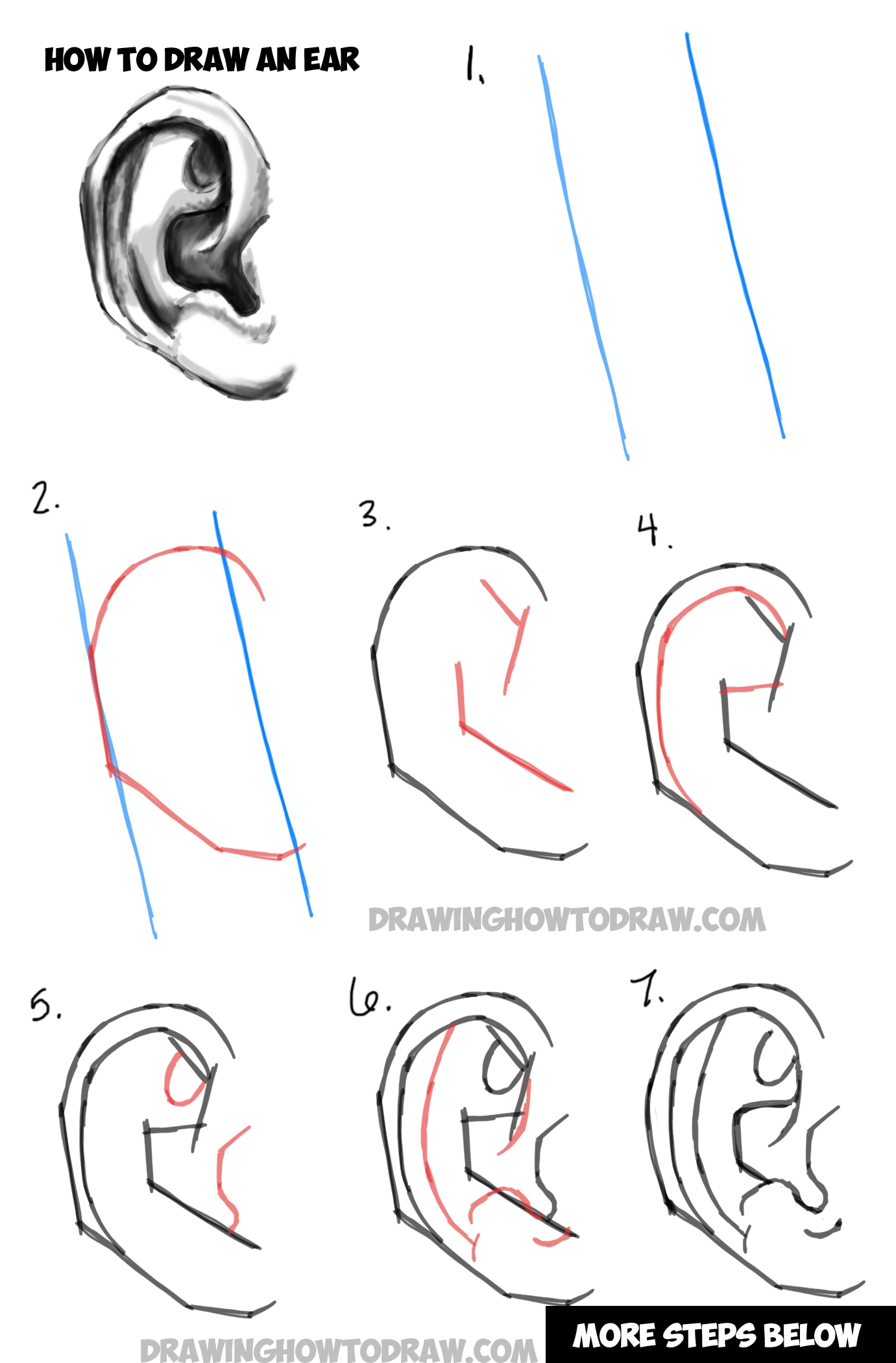When it comes to drawing realistic portraits, mastering the art of drawing ears is essential. Ears may seem like a small detail, but they can greatly impact the overall look of your drawing. With a few simple steps, you can learn how to draw an ear with precision and detail.
Whether you are a beginner or an experienced artist, drawing an ear can be a challenging task. However, with practice and patience, you can achieve realistic results. In this article, we will guide you through the process of drawing an ear step by step.
Step-by-Step Guide
1. Start by sketching the basic shape of the ear. Ears come in various shapes and sizes, but a general guideline is to draw an elongated “C” shape with a smaller loop inside for the ear canal.
2. Next, add details such as the helix (the outer rim of the ear), the antihelix (the inner rim), and the earlobe. Pay attention to the curves and angles of each feature to create a realistic look.
3. Draw the inner ear details, including the tragus (the small flap of cartilage in front of the ear canal) and the antitragus (the bump opposite the tragus). These details will add depth and dimension to your drawing.
4. Shade the ear to create a three-dimensional effect. Use light and shadow to define the contours of the ear and make it appear more realistic. Pay attention to the light source to determine where the shadows fall.
5. Finally, add any additional details such as earrings or hair that may interact with the ear. This will enhance the overall composition of your drawing and make it more lifelike.
With practice and dedication, you can improve your ear drawing skills and create stunning portraits. Remember to study the anatomy of the ear and observe real-life references to enhance your understanding of its structure. By following these steps and experimenting with different techniques, you can master the art of drawing ears.
In conclusion, drawing an ear is a fundamental skill for any artist. By following a step-by-step approach and paying attention to detail, you can create realistic and detailed ears in your drawings. Keep practicing and experimenting with different styles to enhance your artistic abilities and take your drawings to the next level.
